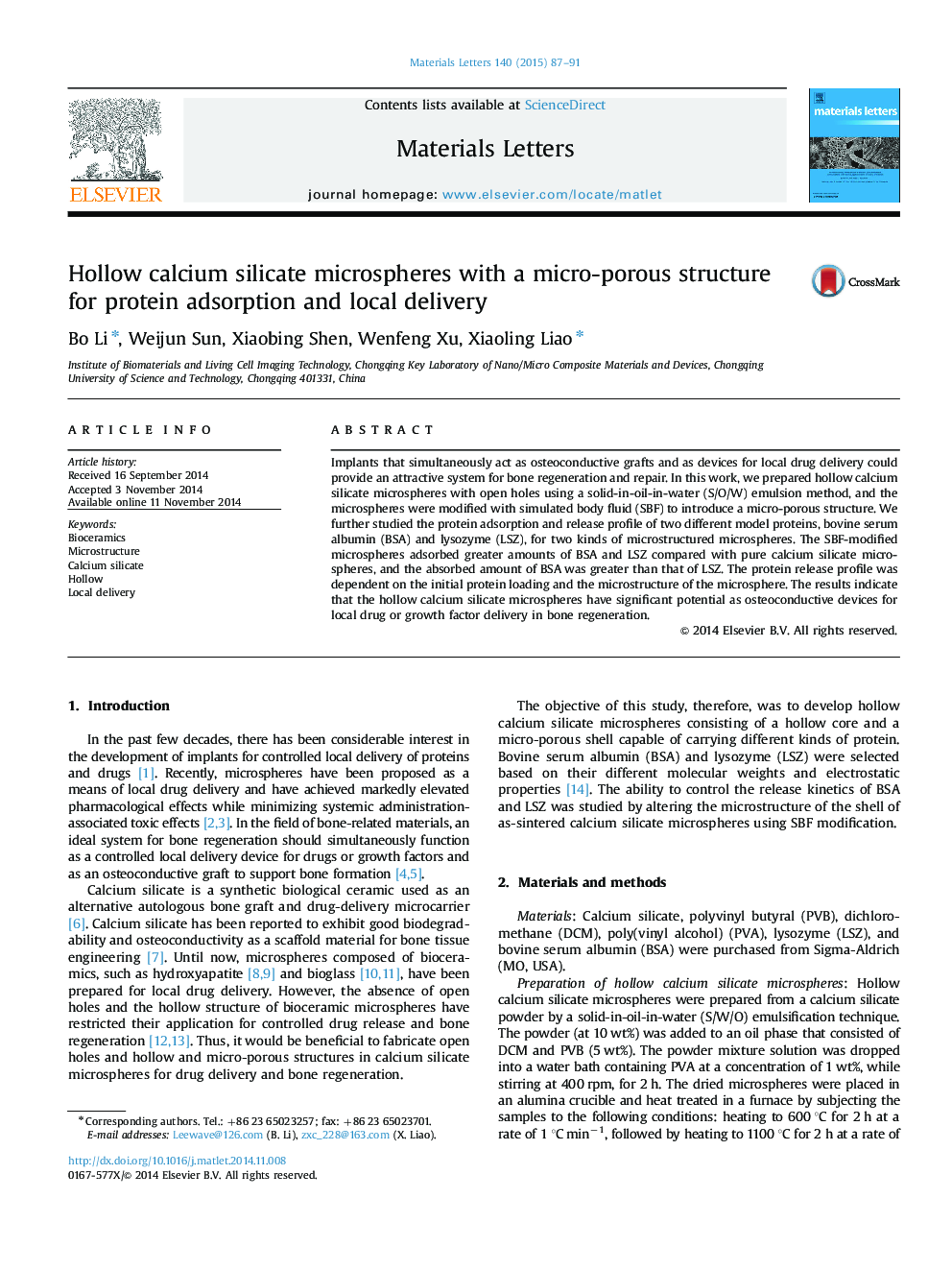| Article ID | Journal | Published Year | Pages | File Type |
|---|---|---|---|---|
| 1643071 | Materials Letters | 2015 | 5 Pages |
Abstract
Implants that simultaneously act as osteoconductive grafts and as devices for local drug delivery could provide an attractive system for bone regeneration and repair. In this work, we prepared hollow calcium silicate microspheres with open holes using a solid-in-oil-in-water (S/O/W) emulsion method, and the microspheres were modified with simulated body fluid (SBF) to introduce a micro-porous structure. We further studied the protein adsorption and release profile of two different model proteins, bovine serum albumin (BSA) and lysozyme (LSZ), for two kinds of microstructured microspheres. The SBF-modified microspheres adsorbed greater amounts of BSA and LSZ compared with pure calcium silicate microspheres, and the absorbed amount of BSA was greater than that of LSZ. The protein release profile was dependent on the initial protein loading and the microstructure of the microsphere. The results indicate that the hollow calcium silicate microspheres have significant potential as osteoconductive devices for local drug or growth factor delivery in bone regeneration.
Related Topics
Physical Sciences and Engineering
Materials Science
Nanotechnology
Authors
Bo Li, Weijun Sun, Xiaobing Shen, Wenfeng Xu, Xiaoling Liao,
